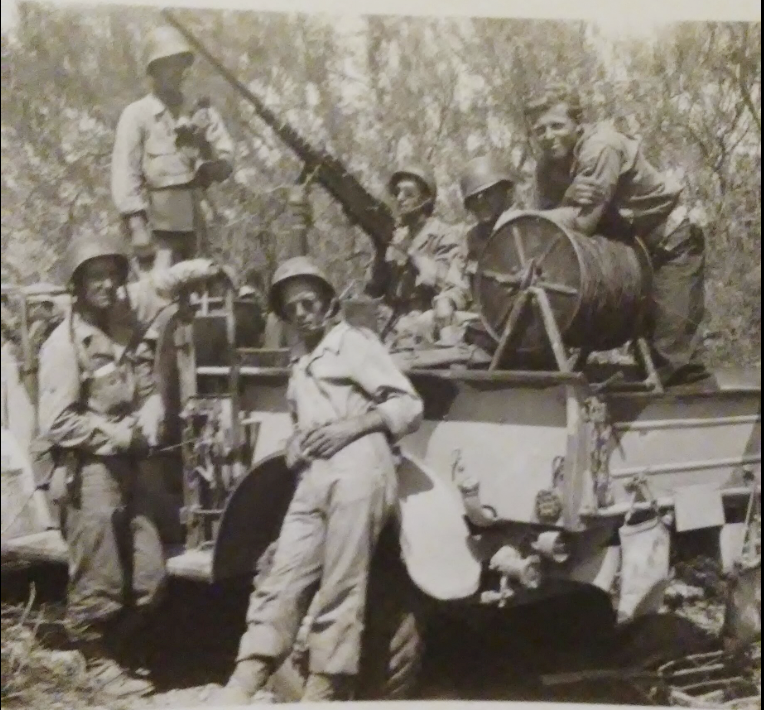Honoring Unity, Sacrifice, and Legacy
Published 1:51 pm Wednesday, May 21, 2025
|
Getting your Trinity Audio player ready...
|
A Memorial Day Reflection on the Greatest Generation and the Birth of the G.I. Bill of Rights
JOHN GALLASPY
SPECIAL TO THE DAILY NEWS
I am not the only one here who remembers the Sunday afternoon in 1941 when we sat by our radios and listened to the news of Pearl Harbor. My family had a little Philco radio, and almost four years later we once more tried to tune out the static so we could share in the ceremony on September 2, 1945, when the Japanese leaders stood before Gen. MacArthur on the deck of the Battleship Missouri as he accepted their surrender.
The events during those four years, and just before and just after, are proof of what the American people can accomplish when we are exerting ourselves for the same purpose, when the energies and resources and emotions of what Abraham Lincoln called “this broad land” are united in a common and commendable purpose. The purpose during those four years was to save the free world, and with the help of our allies, Americans did just that.
One more example of unity, and it involves the American Legion. The Doughboys of 1918 constituted the Legion in 1941 and were very prominent in local and national government. As an example, Gov. Sam Jones, who was elected in 1940, as a reform governor of Louisiana after the “Louisiana Scandals” of the late ‘30’s was one of those Doughboys and had early on served as the commander of the Louisiana Department of the American Legion. These men remembered that the veterans coming home from France in 1918 had landed in New York’s harbor, and had marched down 5th Avenue with bands playing and with confetti being thrown from the windows and marched right on into history and were forgotten by their government as far as their disabilities and rehabilitation were concerned. And those middle-aged Legionnaires resolved that the young Americans of the Second War both men and women, would not be forgotten.
President Roosevelt had been the Assistant Secretary of the Navy during WW I, and he remembered the neglect of the Doughboys after they came home. Various ideas were tossed around as to what could be done for the future of disabled men who were already being brought home, and nothing could be agreed upon. A former National Commander of the American Legion, Harry W. Colmery came forward and led the campaign, coordinating Legion Posts in all 48 states. Commander Colmery wrote the first draft of the Servicemen’s Readjustment Act of 1944, which later became known as the G.I. Bill of Rights. It was ultimately approved by Congress, and President Roosevelt signed it into law on June 22, 1944, just two weeks after “D. Day”.
Mr. Raymond Moley, one of the founders of Newsweek magazine, later wrote that the G.I. Bill of Rights was the most enlightened legislative act of the first half of the twentieth century. It educated a generation of ministers; teachers; C.P.A.’s; engineers who built the Interstate Highway system; horticulturists; chemists; nurses; and also a generation of doctors who during their years of service put in place the medical research that has resulted in the incredible medical techniques that we have today.
This was accomplished by the rehabilitation and education made possible by a group of middle-aged men who had foresight and had their country’s welfare in mind and were supported by a unified America. And I join those whose thought is that if we hope to survive as a country, we must make it our business to regain the kind of unity we had then.
Many of us were saddened recently by the death of Mrs. Iris Morris, one of the grandest and most stalwart of those who personally exerted the tooth-grinding courage of our English brethren during the battle of Britain.
American Legion’s Memorial Day service will commence at 10:00 a.m. on May 26, at the New Veterans’ plot in Ponemah Cemetery. Please join us in this moment of reverence.






